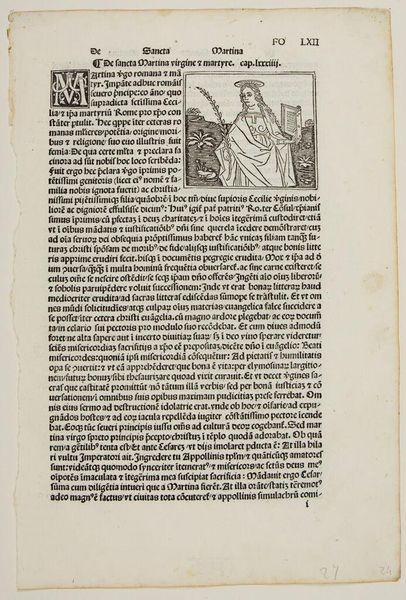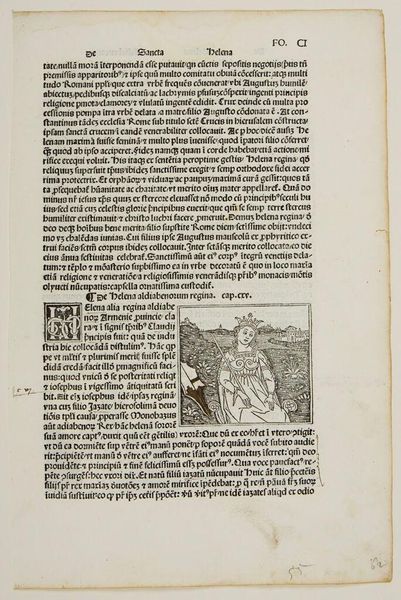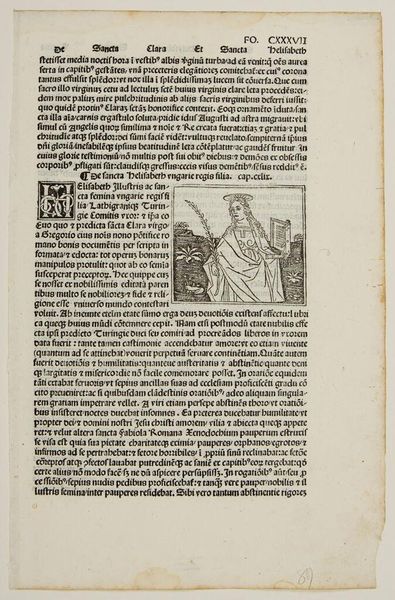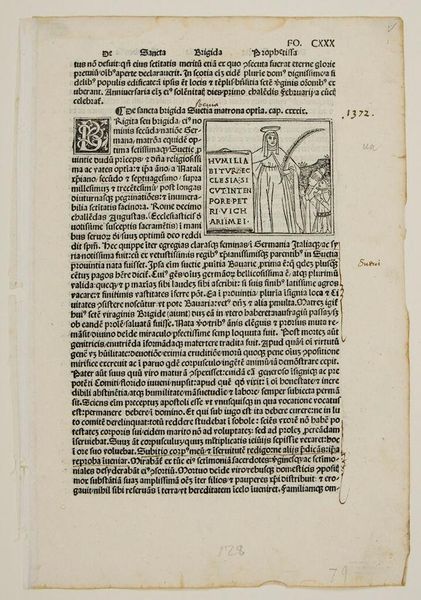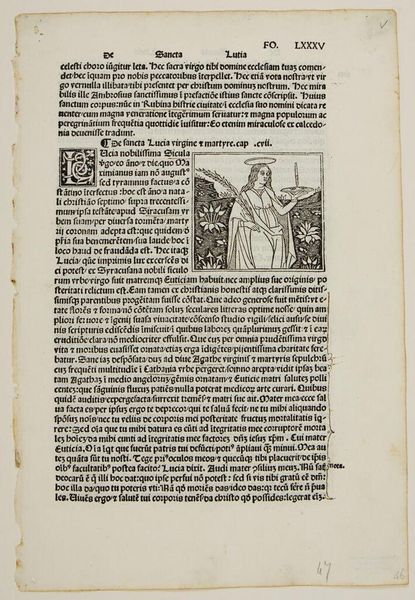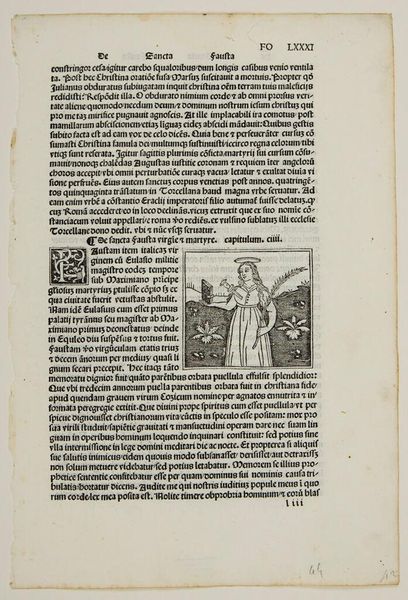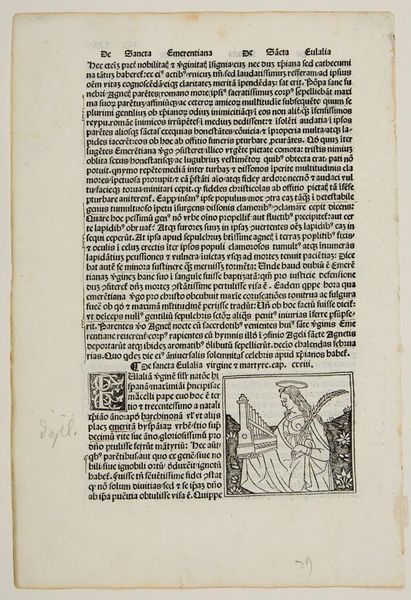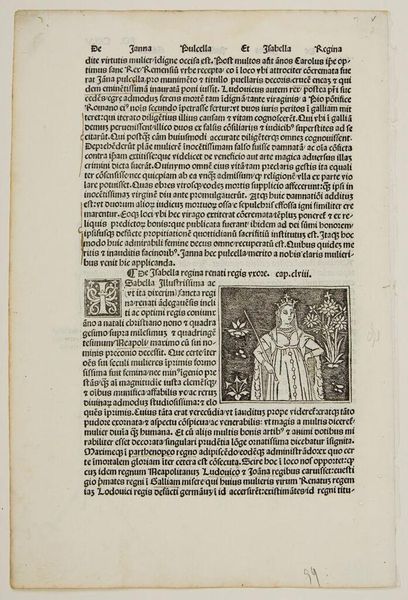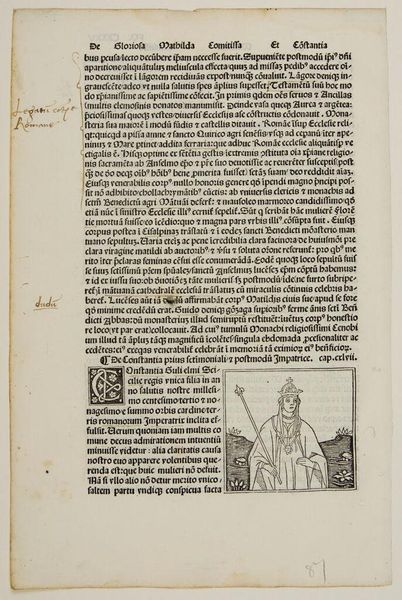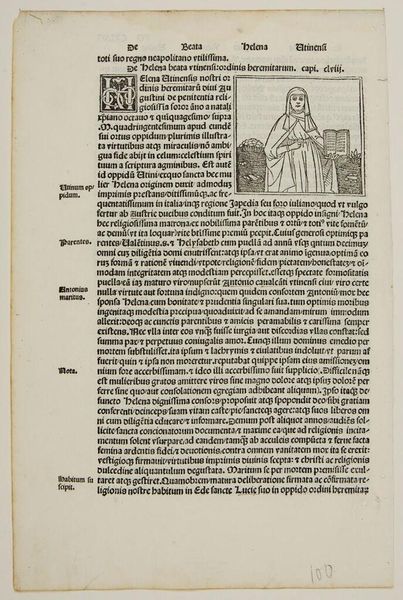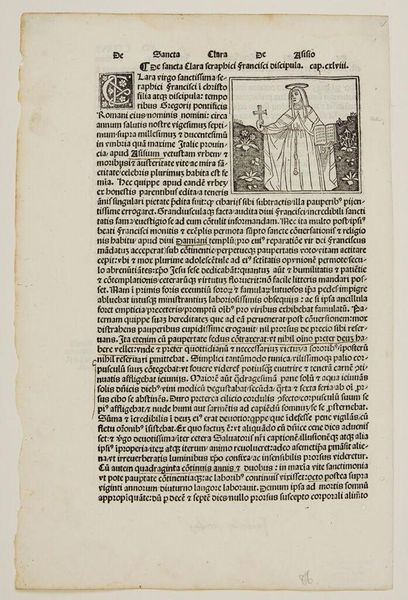
Copyright: CC0 1.0
Curator: Here we have an intriguing woodcut print titled "Saint Demetriade." It's anonymous, dating back to no particular year, and resides in the Harvard Art Museums. What strikes you initially? Editor: The stark contrast between the heavy black lines and the untouched paper gives it a raw, almost urgent feel. You can really sense the hand of the craftsperson in this work. The density of text surrounding the central image is overwhelming. Curator: Indeed. As a historical artifact, this piece offers insight into early printmaking and religious devotion. Saint Demetriade, a Roman virgin, is depicted with a palm frond, a symbol of martyrdom, although she died of natural causes. Editor: The palm is interesting. It points to an idealized version of labor and sacrifice. Look at the repetitive lines— almost like textile work—used to create her garments and halo. Is this a commentary on the material poverty, labor and class? Curator: Perhaps. It also reflects the limitations of the medium; it would have been incredibly labor-intensive to add gradient to the print. This simplicity speaks to the broader dissemination of religious imagery during that era. It was about accessibility. Editor: Absolutely. These woodcuts weren't just devotional aids; they were a form of mass production, a way to distribute ideas and beliefs widely. The materiality of the print makes me think about how the act of making and consuming the image was an act of faith in itself. Curator: It's fascinating to consider how this simple image served as both an artistic expression and a tool for shaping socio-religious beliefs. Editor: It really highlights the intersection of faith, labor, and the power of visual culture in shaping historical narratives.
Comments
No comments
Be the first to comment and join the conversation on the ultimate creative platform.
